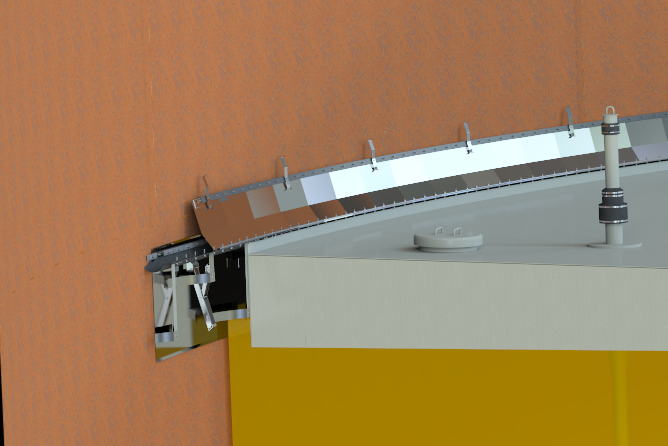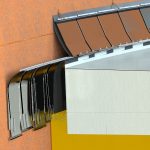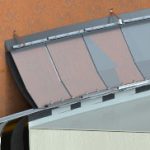In this series of seal design White papers, we will discus the various aspects of tank seal design. We believe that by sharing our knowledge we will contribute to improving the overall knowledge of these safety critical products. This will prevent safety incidents such as rim-fires and corresponding escalations. This way we aim to contribute, not only to an immediate emission reduction as well as preventing future pollution and injuries caused by these major incidents. THe images and texts shown in these whitepapers are intended to serve as learnings for prevention of future incidents and are by no means intended to discredit any supplier. The issues mentioned in the papers are universal and not limited to one supplier. This paper introduces the main concepts and links to papers with specific topics. This will allow easier reading and navigating to useful content.
Introduction primary seal design
The design of the primary seal depends on many factors. The basic design can be divided into 3 main groups
- Foam/Liquid filled seals
- Compression plate seals
- Shoe plate seals.
The basic design is chosen is often completely dependent on the end user, regulations and design codes. It has to be mentioned that the foam/liquid filled seal is often regarded as a somewhat old fashioned seal type and is therefore not used too often. In the following paragraphs the primary seal design will be explained in more depth
Liquid mounted or Vapour mounted
One aspect of primary seals that is increasingly gaining importance is the mounting of the seal. A primary seal can either be vapor mounted or liquid mounted, dependent of the configuration of the seal. If the seal extends into the liquid it is considered liquid mounted. If the sealing takes place above the liquid and the seal does not extend into the liquid it is considered to be vapors mounted (shown on the right).
A liquid mounted seal, as shown on the left is often considered more effective. Underneath the seal there is always an area with vapour present (the area colored in grey). In time the air underneath will become saturated with product. In case of a vapour mounted seal this saturated vapour will emit if an opening in the sealing mechanism takes place. This can occur either due to irregularities in the tank shell or for instance wax deposits on the shell. A liquid mounted seal does not have this effect. When this happens a vapour mounted seal will emit more than a liquid mounted seal and this is why liquid mounted seals are considered to be more effective when compared to vapour mounted seals. It has to be mentioned that also compression plate seals can be made liquid mounted by adding a weighted skirt or dip-curtain
This, however is theory. In practice there is a lot more to it than just the theoretical approach. Basically the decision whether to choose a liquid or vapour mounted seal is a matter of failure analysis. One has to determine which part of a seal can fail and which are the consequences of the failure for the sealing characteristics of the seal.
Causes of primary seal failure
Items that can generally fail in primary tank seals will be:
- Defects in the vapour barrier fabrics
- Mechanical failure
- Design choices
- Tank condition and operational conditions
- Material choices
More details on the failure mechanisms will be presented in the posts on these specific topics of the design.
Vapour barrier fabrics
In the case of a shoe plate seal the vapour barrier fabric is the main obstacle against emission. When the vapour barrier fails the whole seal is rendered useless, because a defective fabric will release the saturated vapour into the area between the primary and the secondary seal and as a result the whole area underneath the secondary seal will become saturated in due time. the images below show some failure mechanisms.
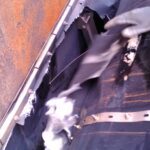
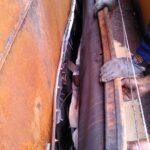
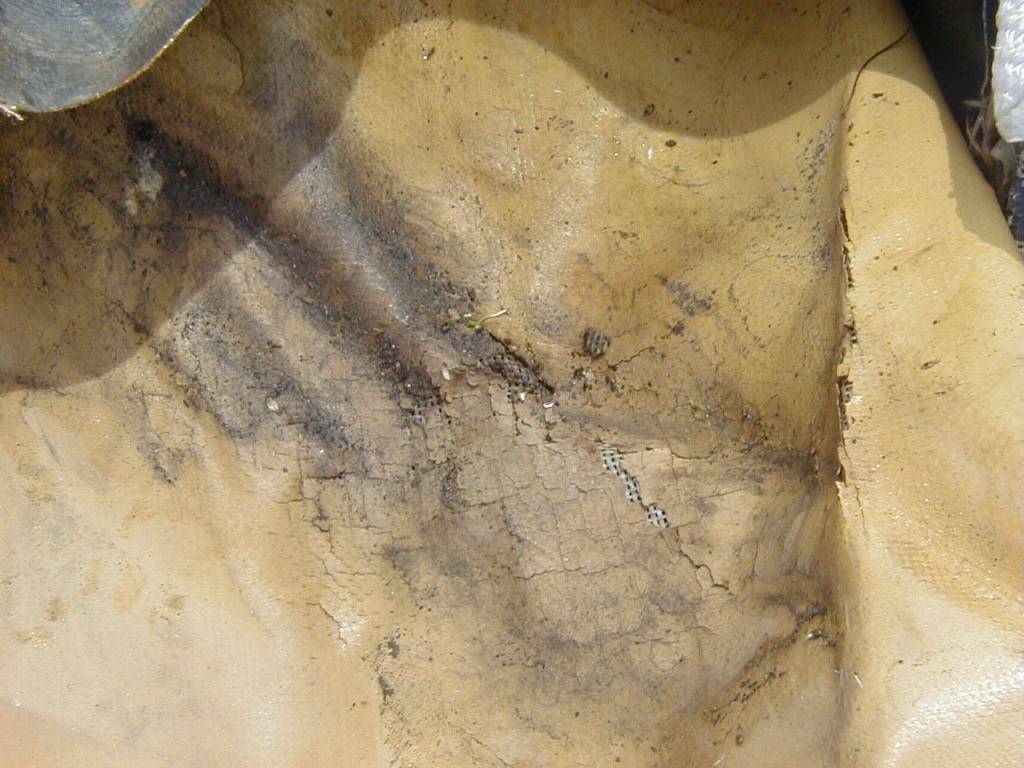


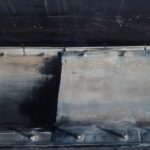
Mechanical failure
Failure in the mechanical functioning of primary seal typically arise when items of a seal fail to move, due to corrosion, wax deposition or wear. While shoe plate seals often have many moving parts, compression plates only have stationary compression plates and therefore do not fail mechanically due to these causes. Compression shoe seals, however fail more often due to design mistakes, as designing a proper compression shoe seal requires significant experience. The result of a mechanical failure will be an opening in the shoe plate and the getting saturated of the area between the primary and the secondary seal.

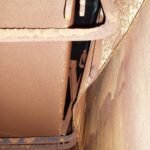
Design choices
Tank seals are designed by people and therefore design mistakes due to human error do happen and should be avoided by having proper procedures in place. Design mistakes, however have several root causes. Firstly human error, where an engineer makes a mistake in the design and it does not get spotted until the tank seal is fitted. Secondly lack of knowledge on the part of people involved plays a major part. Mistakes are not spotted by the engineers on the client side due to lack of knowledge and finally bad decisions are made due to cost saving attempts. Thank seals are considered to be a commodity when they are basically an engineered item. Therefore it is hard to compare the different suppliers and their offerings. In an effort to save some money and obtain a competititve advantage different designs are offered, which are less expensive but all have their own distinct disadvantages over the widely accepted designs. In practice this kind of experiments result in a short term gain for the buyer, but in the end will result in significantly higher costs for replacement of the seal and taking care of all the costs associated with the incident. This is the main reason that we promote knowledge sharing through this kind of whitepapers.

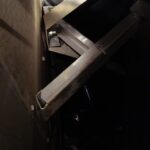
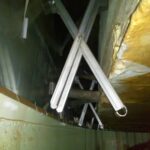
Tank condition and operational conditios
Large rim-gaps can very well cause seal failure. In all seal designs a too large rim-gap will affect the sealing characteristics. In extreme cases the seal will no longer be tight and start emitting vapours into the air. Compression plates are the most prone to damage with too large rim-gaps as the compression plates may buckle when they apply too little or no force to the tank shell. It is therefore extremely important that tank seals are designed individually for each tank they are fitted on.
Material choices
It is essential to select the correct material for the primary and secondary rim seals. Next to the requirement for chemical resistance, which is related to the stored product and the resistance against ultraviolet radiation of the seal material exposed to direct sunlight, it can be important to check whether the material is flame retardant. This is applicable to the design of new seals as well as when replacing the old seal material.
The primary seals should always be hydrocarbon resistant since they are in direct contact with the product/product vapours, while the top of secondary seals needs to be ultraviolet resistant as well as flame retardant.
The tip structure of the secondary seals which slides along the tank shell should preferably be made of two kinds of material: the bottom section of a hydrocarbon resistant material, and the top section of a UV resistant material.
Conclusion:
When selecting and evaluating a primary seal many aspects have to be taken into consideration, seal design, mounting of the seal, failure mechanisms, tank geometry and stored product are amongst the most important. Taking into consideration all different design aspects and designing a seal for each individual tank will result in a sealing system that will function trouble free for a long period of time. We will be happy to assist you with this process to the bes of our abilities.

